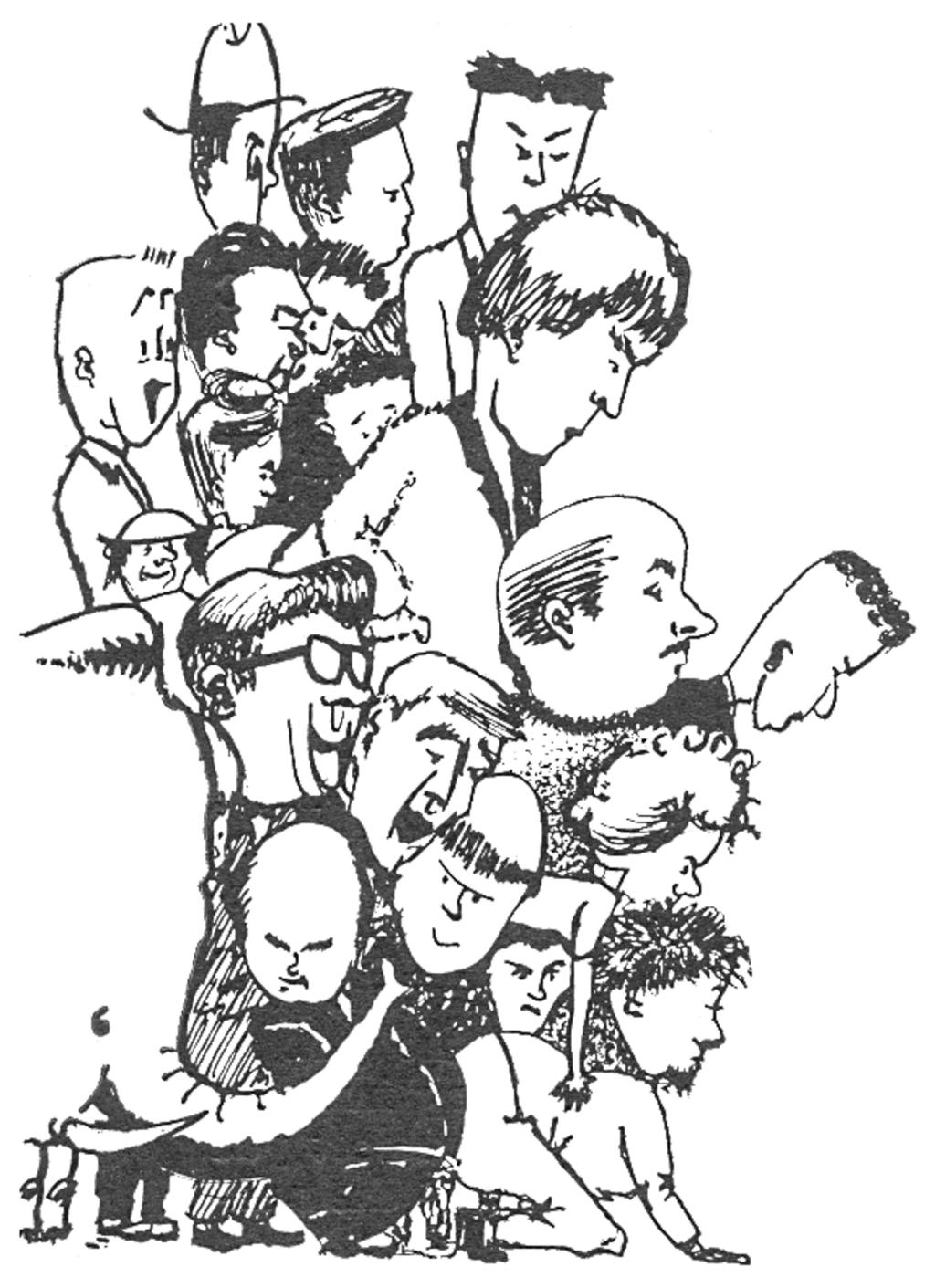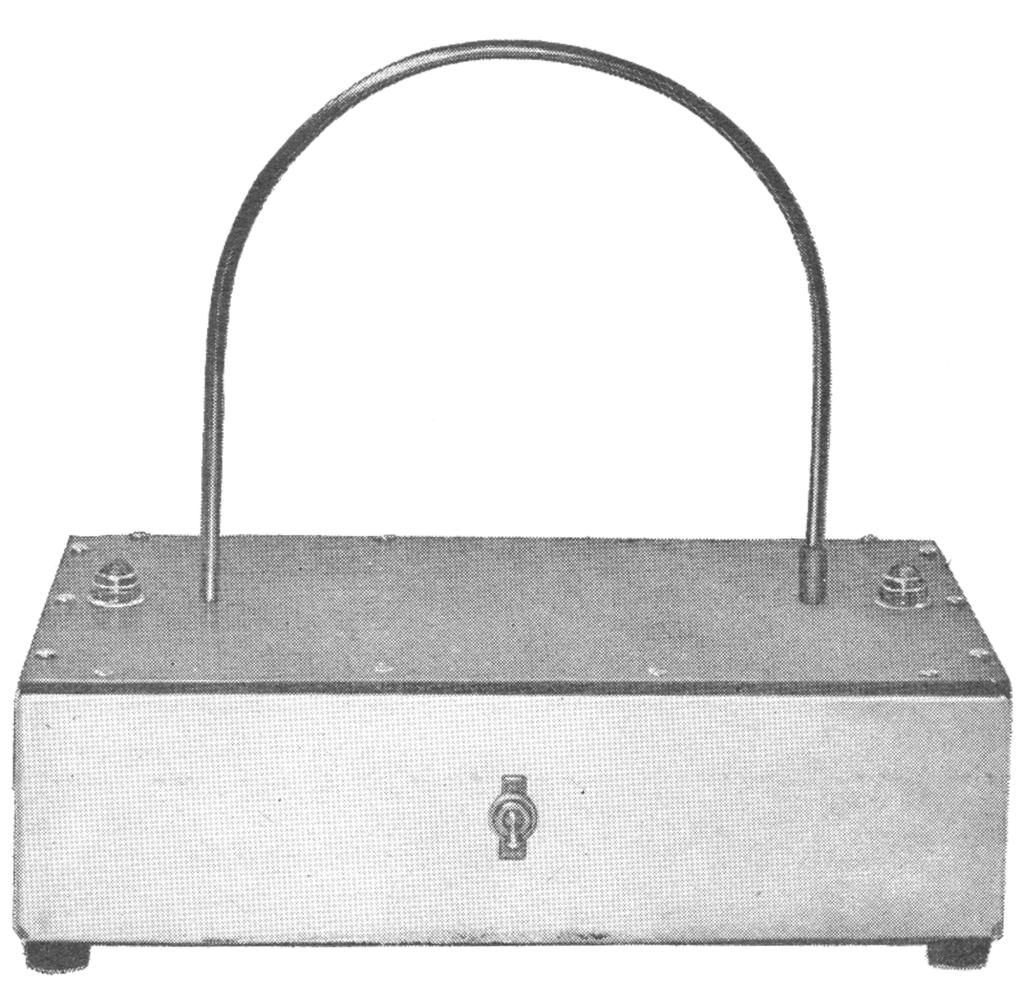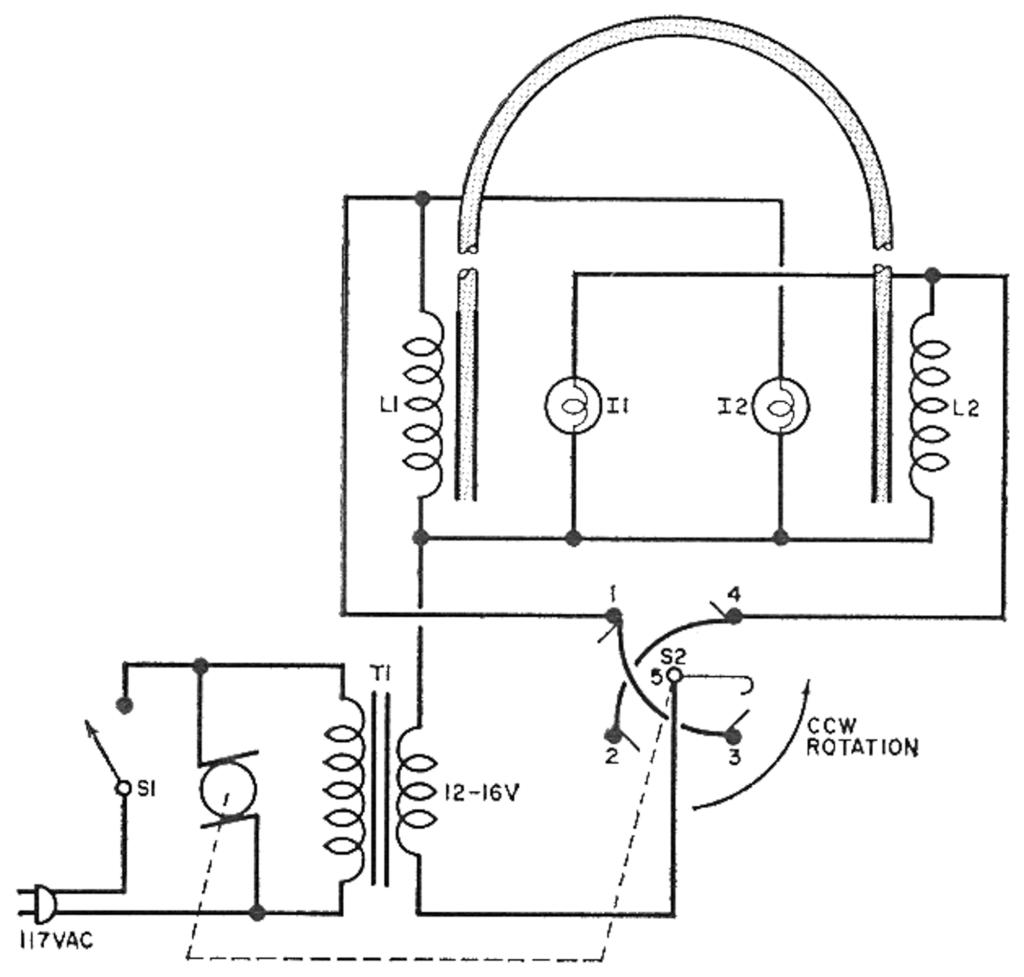TCBA Volume 19 - Issue 1
Page 6 of 18
A light on one side of this mystery box flashes, and a ring jumps toward it like a trained animal. Within a few seconds a light on the opposite side flashes, and the ring leaps over to it with the same rapidity. This action continues as long as power is applied.
What facet of space-age technology has made it possible for a light to attract what appears to be a black metal ring? Is it an ionic generator of some sort, or some heretofore unknown plasma or form of energy at work? What electronic genius thought this thing up in the first place? Chances are that you will get as many different explanations as there are viewers, if you insist upon answers to your questions.
The flashing light creates the illusion of attracting the ring, and the illusion attracts a crowd. Aside from the commercial aspect of being able to capture the attention of large groups of people, a principle of mutual induction can be demonstrated and the project should make an intriguing entry in science fairs or other similar events.
How It Works. A slow-revolving (6-rpm) timing motor alternately energizes a coil located at each end of a semicircular soft iron rod. See Fig. 1. Coil L1 is energized when contact 1 or 3 is touched by the rotating arm; coil L2, when contact 2 or 4 is made. When a coil is energized, a magnetic field is created.
The soft iron rod in the center of the coil concentrates much of the energy in the magnetic field and increases the coupling of the magnetic field to the aluminum ring. This causes an induced current to flow in the ring, which sets up a magnetic field of its own. These fields magnetically oppose each other, and the ring is vigorously repelled. It shoots upward and away from the coil, travels around the loop, and lands on the other side, near the other coil. When the other coil is energized, the ring is shot back to where it came from. This back-and-forth motion is in step with the rotation of the timing motor.



